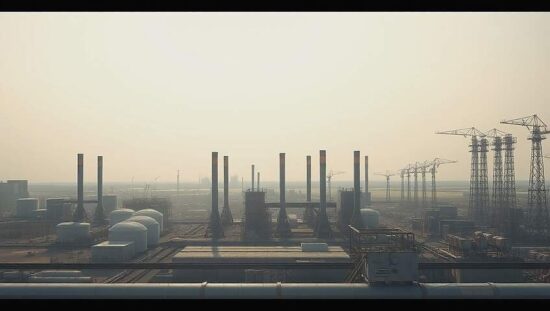The German industrial sector’s energy consumption rebounded in 2024, signaling a complex interplay of economic recovery and persistent structural vulnerabilities. New data released by the Federal Statistical Office (Destatis) reveals a total energy consumption of 3.343 Petajoules, marking a 1.9% increase compared to 2023. While seemingly modest, this rise punctuates a period of significant fluctuation following sharp declines in 2022 (-9.1%) and 2023 (-7.8%), driven primarily by soaring energy prices and consequent production curtailments within energy-intensive industries.
The reliance on traditional energy sources remains entrenched. Natural gas continues to be the dominant fuel (29.2%), followed by electricity (21.1%), mineral oils (16.5%) and coal (14.5%). The vast majority (89.5%) of energy usage is dedicated to power generation and heat production, a figure that ticked up marginally (0.7%) year-on-year. However, a more concerning trend involves the increased use of energy as a feedstock for industrial products – chemicals, fertilizers and plastics. This category, representing just over 10% of overall consumption, witnessed a substantial 13.3% surge, prompting questions about the sustainability and efficiency of these processes.
The recovery in energy usage is disproportionately concentrated within the most energy-intensive sectors. Having suffered significant declines in 2022 and 2023 (-9.6% and -8.4% respectively), these industries saw their energy consumption climb by 3.2% in 2024, reaching 2.738 Petajoules. This accounts for 81.9% of total industrial energy consumption, a considerable shift upwards from the 80.8% share observed in 2023. Notably, the chemical and petroleum refining industries led the way, registering energy consumption increases of 7.1% and 5.4% respectively – a potential indicator of renewed industrial demand but also raising concerns about emissions.
The chemical industry remains the single largest consumer, accounting for 27.9% of the total. While a significant portion (34.1%) of the energy used within the chemical sector is channeled into non-energy feedstock applications, the sheer volume of overall consumption positions it as a critical area for scrutiny. This contrasts sharply with the relatively low proportion of feedstock energy use in industries like metal production (0.7%), highlighting the unique challenges associated with transitioning the chemical industry towards a more sustainable model. The rebound exposes lingering structural dependencies and potentially undermines Germany’s stated climate targets, demanding a more robust strategy focused on energy efficiency, renewable adoption and diversification of industrial processes.





